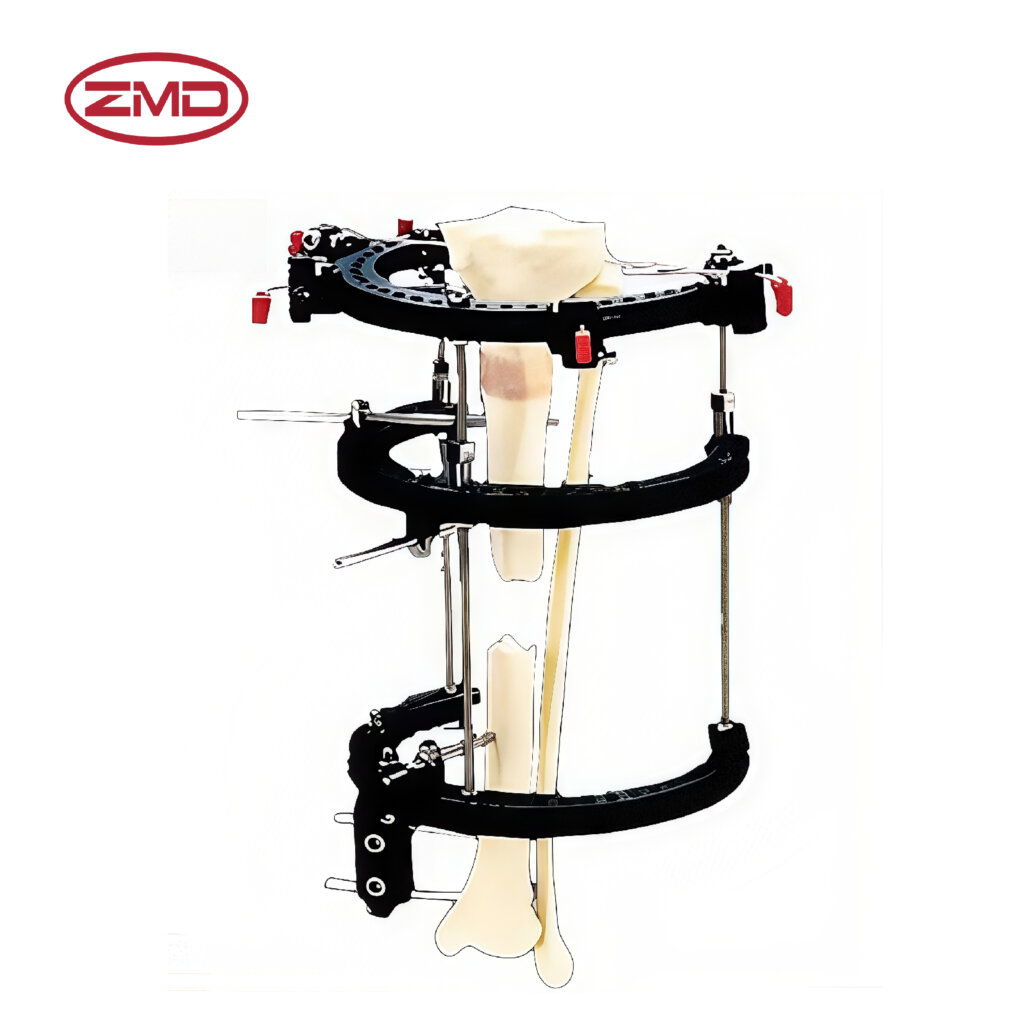
- Home
- About Us
- Products
- Trauma Internal Fixation System
- Spinal Internal Fixation System
- External Fixation
- Artificial Implants System
- Sports Medicine
- Power tools
- VSD System
- Instruments
- Medical supplies
- Blog
- Personnel Profile
- Contact Us
Phone line
| CODE | PRODUCTION | DESCRIPTION | MATERIAL |
| ZJ104 | Pennig Minifixator Standard Clamps(1 pair) | 1 pair | Aluminum |
The clamps are typically made of high - quality metals. The choice of metal is based on the need for durability and strength. These metals are able to withstand the significant forces that are exerted on the clamps during orthopedic procedures. For example, they must endure the pressure required to hold bones in place and the stress caused by patient movement. The high - quality material also ensures that the clamps maintain their shape and functionality over time, providing reliable performance throughout the treatment process
Yes, they are designed for relatively easy installation on the minifixator rods. The design of the clamps takes into account the practicalities of a surgical or clinical setting. Their shape and attachment mechanisms are such that, with a basic understanding of the Pennig Minifixator system, medical personnel can install them without excessive difficulty. This ease of installation helps to save time during orthopedic procedures, allowing for a more efficient setup of the fixation system
Yes, they have adjustable features to ensure proper fit and tension. The adjustability of the clamps is a key aspect of their design. This allows healthcare providers to customize the amount of force exerted by the clamps to suit the specific needs of the patient's orthopedic condition. For instance, depending on the type of fracture (e.g., a simple or complex one), the size of the bone fragments, and the degree of stability required, the tension can be adjusted to achieve the most effective fixation.
They provide a very secure grip to hold the bones or injured area in place. The design of the clamps, including their internal mechanisms and the way they interact with the minifixator rods and the bones, is engineered to ensure a firm hold. This secure grip is essential for immobilizing the affected area and maintaining the correct position of the bones. It helps to prevent any unwanted movement that could disrupt the healing process, such as bone fragment displacement in the case of fractures.
There may be different sizes available to fit various minifixator models. The availability of different sizes provides flexibility to match the specific requirements of different orthopedic setups. Different patients may have different anatomies and the minifixator models may vary in size and design. Having multiple sizes of clamps allows for a more accurate and effective fit, ensuring that the fixation system functions optimally for each individual case
In some cases, they can be reused if they are in good condition. After a treatment cycle, the clamps can be cleaned, sterilized, and inspected. If they have not been damaged, deformed, or otherwise compromised during the previous use, they may be suitable for reuse. However, the decision to reuse them usually depends on the hospital's or clinic's policies and the specific circumstances of each case.
They are suitable for many types of fractures but may not be appropriate for every case. The clamps are versatile and useful for a wide range of fracture scenarios, especially those where a standard method of fixation is applicable. However, in some very complex or specialized fractures, other types of fixation devices or techniques may be more suitable. For example, in certain fractures with very small or irregular bone fragments, or those involving specific anatomical locations, alternative fixation methods might be preferred
With proper care, they can last a long time and withstand the rigors of orthopedic treatment. The lifespan of the clamps depends on several factors, including the frequency of use, the forces they are subjected to during procedures, and the quality of maintenance. If they are used and maintained correctly, they can serve through multiple treatment cycles, providing reliable performance over an extended period
Some basic tools may be needed for installation, but they are not overly complicated. The specific tools required would depend on the design of the clamps and the minifixator system. Typically, tools such as screwdrivers or wrenches of a standard size may be used to tighten or adjust the clamps. These are common tools that are usually available in an orthopedic operating room or clinical setting
They are specifically designed for the Pennig Minifixator but may not be compatible with other systems. The clamps' design, including their size, shape, and attachment mechanisms, is tailored to work with the Pennig Minifixator. They may not fit or function properly with other fixation systems due to differences in design and engineering requirements
Oh yeah! I have to mention their payment options and discount offers, which are awesome! Those payment methods are as flexible as moving water and can be chosen freely according to our cash flow situation. And the frequent discounts, like a timely rain, have been moisturizing our financial statements time and again, and have had a rocket-like positive impact on our profits! With ZMD, I feel relaxed and at ease when it comes to purchasing!
Send us a message if you have any questions or request a quote. Our experts will give you a reply within 24 hours and help you select the right valve you want.
Book Now
If you are looking for professional orthopedic medical product solutions, don’t hesitate to contact us now!

We are an integrated manufacturer specializing in orthopedic medical industry, providing high quality and reliable orthopedic medical products to customers worldwide.
Copyright © 2024 ASK Project